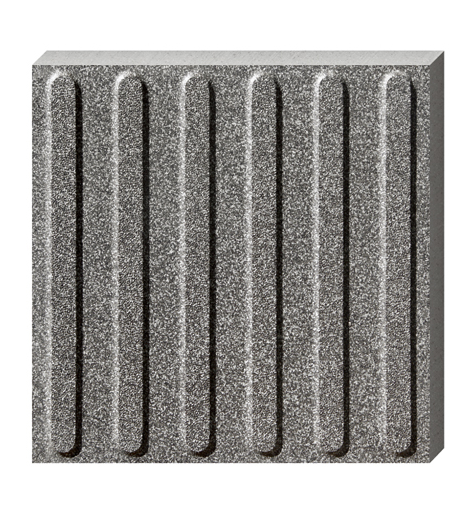|
When walking through the streets and alleys of the city, you may often step on some floor tiles with special bumps or patterns on the surface. These are the "tactile paving" we mentioned before, and the raised and patterned parts that play a crucial guiding role are professionally called "tactile indicators".

I. Specific Styles and Functions of Tactile Indicators
There are several typical appearances of common tactile indicators. For example, the regularly spaced strip-shaped bumps on the "walking bricks" allow blind people to move forward steadily along the direction of the strips as if being guided by an invisible line when they step on them. The large round bumps on the "stop bricks" serve as a conspicuous reminder of approaching danger. Whether it's the busy traffic at an intersection, the height difference of steps in front of a building, or a sudden obstacle, blind people will know to stop and explore the surrounding environment carefully once their feet touch these large round bumps.
Besides these two basic styles, there are also modified designs in some special scenarios. For instance, at the edges of subway and railway platforms, there will be slightly raised tactile strips with certain anti-slip textures, which can not only warn blind people of the danger of approaching the platform edge but also prevent them from slipping due to wet ground. In the complex passage intersections inside some large shopping malls and hospitals, tactile indicators will combine color contrast (such as light yellow floor tiles paired with dark brown bumps) to further enhance the dual prompting effects of vision and touch, making it easier for visually impaired people to notice.
II. Coordination between Tactile Indicators and the Overall Barrier-free Environment
It doesn't exist in isolation but closely cooperates with the surrounding environment. At a bus stop, one end of the tactile indicator is precisely connected to the bus waiting area, and the other end extends along the sidewalk and seamlessly connects with the street-crossing blind path. Blind people can smoothly complete a series of travel actions such as waiting for the bus, getting on the bus, and crossing the road by following this "guidance chain". At the entrances of public buildings such as schools and libraries, tactile indicators extend from outside the gate into the building, connecting key points such as barrier-free passages, elevator lobbies, and service desks, enabling visually impaired students and readers to enter and exit independently and enjoy equal public service resources.
III. Challenges and Maintenance Points
However, the current situation of tactile indicators is not optimistic. Daily wear and tear is one aspect. Frequent pedestrian trampling, wind, rain, and vehicle rolling can easily flatten the bumps and blur the patterns, reducing their recognizability. Negligence during construction is an even more serious problem. In some projects, in order to rush the progress, the precise installation of indicators is ignored, resulting in angle deviations and poor connections, which are potential "traps" for visually impaired people.
Maintenance work is of vital importance. Municipal departments need to establish a regular inspection mechanism to check the integrity of tactile indicators just like checking the road smoothness and repair or replace them in time when problems are found. Construction units should strictly follow the barrier-free design specifications and carry out precise construction. After the project is completed, they should also hand over the maintenance key points of tactile indicators to the management department completely to ensure their long-term effective functioning.
IV. Prospects for Innovative Development
The future empowered by technology is promising. Perhaps soon, tactile indicators can be equipped with miniature sensors to interact with smart wearable devices. When a blind person approaches, a wristband will vibrate to give an additional reminder. Or self-luminous and luminous tactile indicators will be developed, which can clearly "point the way" even in a dark environment at night or with dim light. Let's pay common attention and offer assistance together to make the small tactile indicators become capable "navigators" for special people to travel smoothly around the world.
#Tactile Paving #Tactile Indicators #Barrier-free Travel #Caring for Special Groups
|